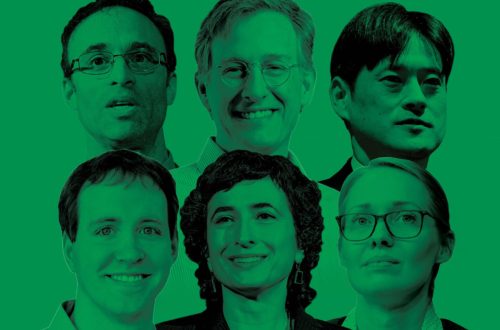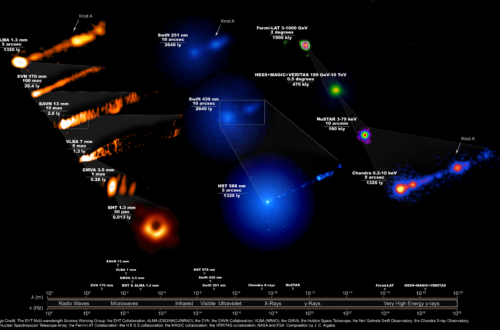The new group has arrived as of this week (woohoo!) and I will be adding some information about that as soon as possible, but in the meantime I thought I would just mention some news, which is that as of last month I have been elected to be a member of the Science Council of the international Event Horizon Telescope project.
This project is an ingenious idea to use the entire Earth diameter as a huge baseline for a telescope, using a technique called Very Long Baseline Interferometry (VLBI). Why do this? Because the larger your telescope is, the better you see, and in particular, the finer details you see.
VLBI has been done for many years in the radio bands, but it is very challenging at higher frequency (shorter wavelengths) primarily because the atmosphere changes in ways that affect those bands more, so there is a sort of background that confuses your ability to make a good image when one telescope in your array sees through a different piece of the sky than another. That’s where the ingenious part comes in: using supercomputers to correlate the data as well as new techniques to correct for these effects, it is now possible to move to higher frequencies like the millimeter and submillimeter. These frequencies just happen to be where the regions just touching on the Event Horizon (thus the name) of two nearby supermassive black holes are brightest: the black hole in the center of our Galaxy, Sgr A*, and the whopping huge one in the center of a nearby galaxy, M87. With the full array, already in prototype stage, we will be able to make the first ever images of regions on event horizon scales, quite possibly even seeing the “shadow” of the black hole where the light is sucked in, leaving a dark spot. But we also expect to test our ideas about how accretion (a fancy word for stuff falling inwards due to the pull of gravity) lights up the regions around black holes, which are subject to extreme space-time curvature due to the strong gravity, as well as extreme physical conditions like very high density and magnetic field strength.
If you can’t tell, I’m pretty excited about this project, so it’s an honor to have been invited to sit on the committee that helps define the science requirements, and advises on things like science priorities and working groups, in order to maximize the science output.




